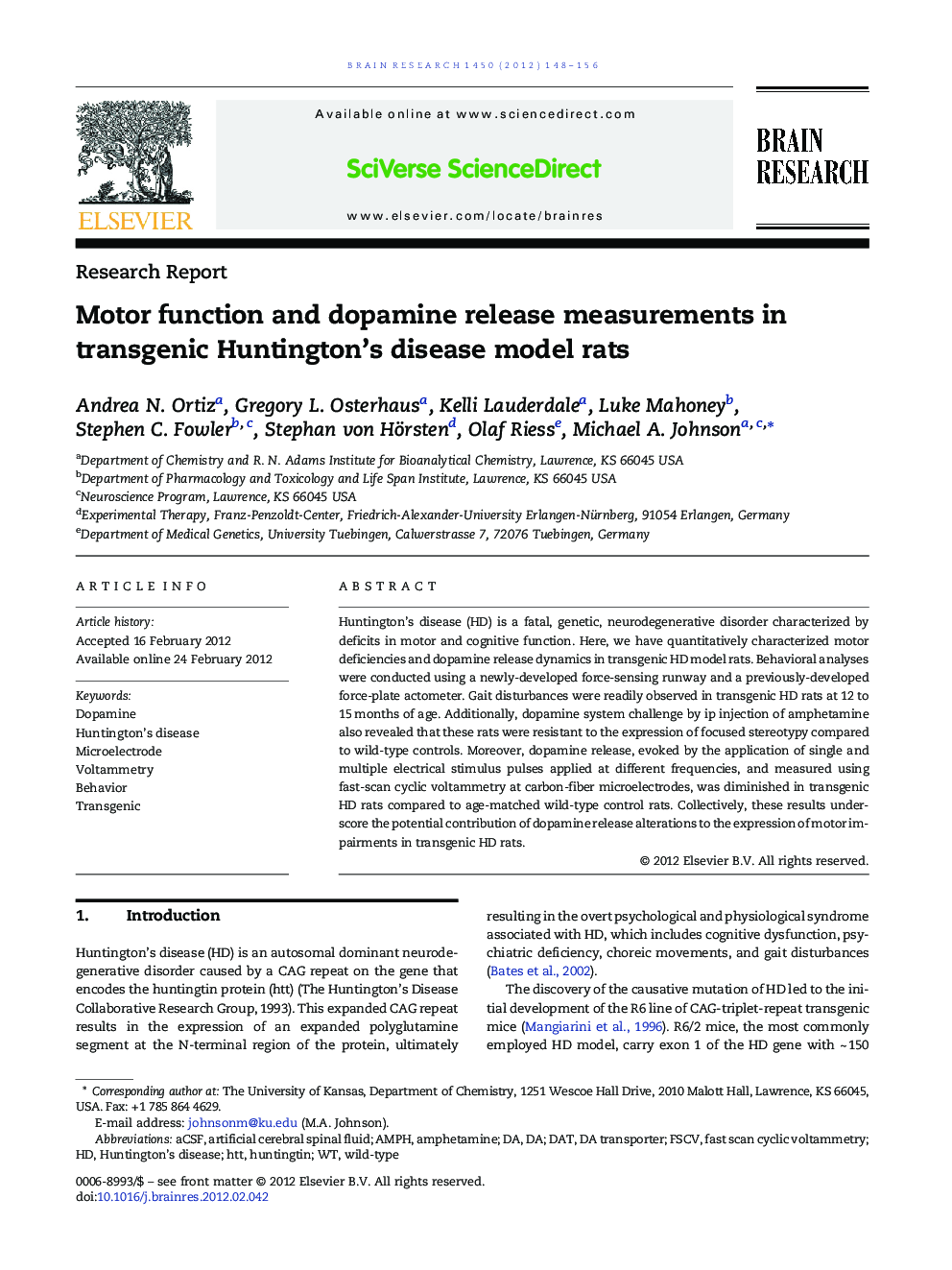| Article ID | Journal | Published Year | Pages | File Type |
|---|---|---|---|---|
| 6264425 | Brain Research | 2012 | 9 Pages |
Huntington's disease (HD) is a fatal, genetic, neurodegenerative disorder characterized by deficits in motor and cognitive function. Here, we have quantitatively characterized motor deficiencies and dopamine release dynamics in transgenic HD model rats. Behavioral analyses were conducted using a newly-developed force-sensing runway and a previously-developed force-plate actometer. Gait disturbances were readily observed in transgenic HD rats at 12 to 15Â months of age. Additionally, dopamine system challenge by ip injection of amphetamine also revealed that these rats were resistant to the expression of focused stereotypy compared to wild-type controls. Moreover, dopamine release, evoked by the application of single and multiple electrical stimulus pulses applied at different frequencies, and measured using fast-scan cyclic voltammetry at carbon-fiber microelectrodes, was diminished in transgenic HD rats compared to age-matched wild-type control rats. Collectively, these results underscore the potential contribution of dopamine release alterations to the expression of motor impairments in transgenic HD rats.
⺠We measured behavior and dopamine release in transgenic HD model rats. ⺠Rats show impaired gait and decreased focused stereotypy response to amphetamine. ⺠Dopamine release is impaired in HD rats. ⺠Altered behavior may be influenced by dopamine release impairment.
